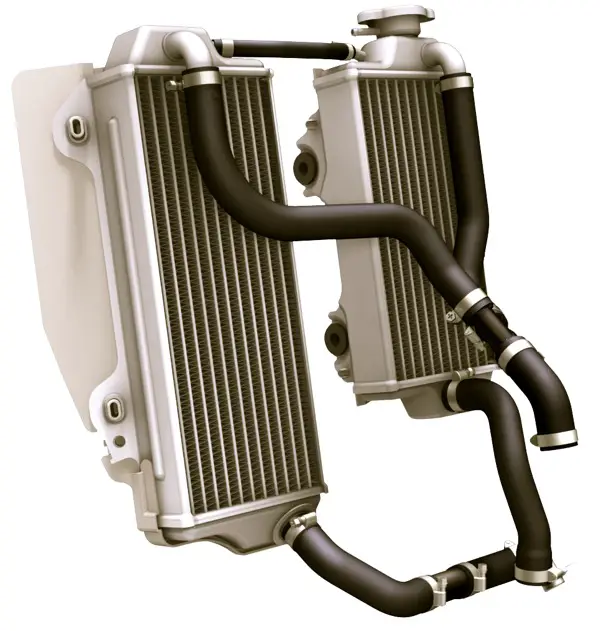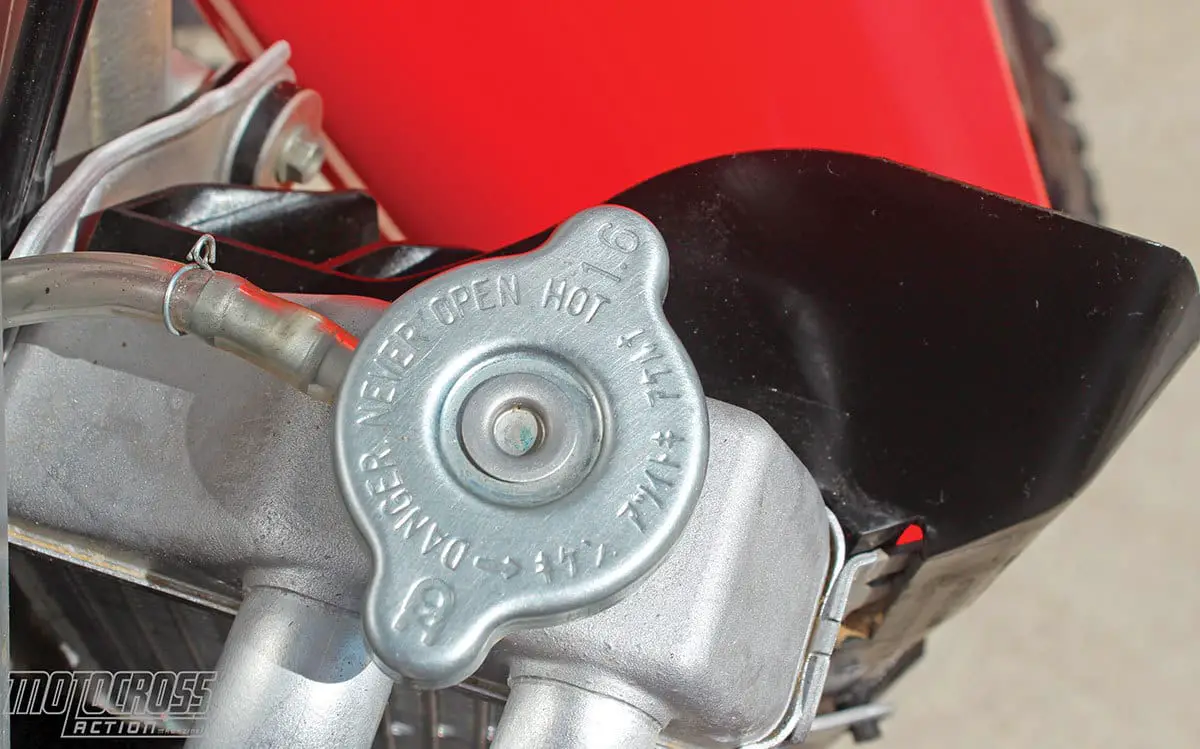TEN THINGS YOU NEED TO KNOW ABOUT ENGINE COOLING

(1) Ethylene glycol. Special coolants are better than water (although water can be used in a pinch). Most coolants use ethylene glycol as the main ingredient. This alcohol-based fluid can raise the 212-degree boiling point of plain water by as much as 60-plus degrees. A coolant is also called “antifreeze” because it drops the freezing point down to the minus-80s. Inhibitors are also added to coolants to control corrosion. Silicates aid in the lubrication of water pump seals. De-foamers maintain the consistency of the coolant as it’s being whirred around by the impeller.
(2) Distilled water. If you want to put water in your radiator, it is best to use distilled water. Distillation is a process that takes water and boils it. While the impure sediments stay down at the bottom, the steam vapor is collected. The liquid that is collected as vapor is the purest form of water you can buy. By using distilled water, you eliminate the impurities that scrape and corrode the cooling system.
(3) Water level. How high should the water level be in the radiators? To the top. If the fluid level drops by even a small amount, start looking for the leak. The most likely places are head gaskets, hoses, the radiator cap or water pump seal.
(4) Pressure. Since the boiling point of fluid is higher when pressurized, the manufacturer takes advantage of this by pressurizing the cooling system. The radiator cap keeps the coolant under pressure. If you think your bike has a cooling problem, the first step is to inspect the radiator cap’s O-rings and gaskets for cracks. A broken gasket means the cap can release hot coolant out the overflow where it exits as steam. Borrow a radiator cap to see if this solves the problem.
(5) Trouble shooting. Overheating can be caused by a myriad of problems. A bad cap, faulty impeller, coolant blockage, lean jetting, thrashed top-end, bad coolant or a blown head gasket can all cause steam to be pumped out the radiator overflow hose. Anything that impedes the speed at which the coolant flows through the radiator will cause it to overheat. Old coolant can have such a low boiling point that it will spew out the overflow when the engine is used hard. If you suspect a water pump seal leak, a quick check of your gearbox oil will tell you if water is leaking into the tranny (oil with water in it looks like chocolate milk). Finally, a blown head gasket can leak exhaust gases into the coolant and pressurize the system so much that it triggers the radiator cap’s blow-off valve.
(6) Risk versus reward. Can you still race a bike that is showing signs of losing water? It depends on what is coming out of the engine. If you haven’t found any obvious signs of a leak and the bike isn’t blowing steam out of the overflow hose when being ridden, you need to judge how far the coolant level dropped in the radiator. If you can’t see any coolant in the radiator, park it and have it fixed. If the level has dropped down to the top of the inner core structure, you could try to race. But first, borrow a radiator cap from a buddy. Fill the radiators up with water and have a friend signal you if it starts steaming. It is risky.

(7) Pressure tester. If you think your radiator is leaking from a broken vane, you can check it with a Snap-On coolant system pressure tester. The Snap-On cap uses the Snap-On hand pump to inflate the system to the maximum pressure listed on the radiator cap. Coolant will leak from wherever the fault is.
(8) Repair. A radiator repair shop can successfully weld a cracked tank or spigot, but leaks in the core and vanes are harder to deal with. The fin area is too thin to weld, and epoxy doesn’t hold up well. As painful as it is to your wallet, the best way to repair a busted radiator is to replace it.
(9) Guards. Aluminum-style radiator guards, the ones that fit in front of the radiators and have holes drilled in them, will protect a radiator from roost, tree branches and other obstacles, but they reduce air flow (and can raise engine operating temperature by as much 10 degrees). On the other hand, radiator braces, the kind that support the radiators from the side or behind, are a good idea.

(10) Radiator cap. The simplest and cheapest way to avoid boiling your engine, especially important on over-stressed Kawasaki and Suzuki cooling systems, is to drop-kick the stock 1.1 kg/cm2 radiator cap for a 1.6 or higher cap. While raising your cooling system’s maximum operating pressure does raise your cooling system’s boiling point and therefore helps to avoid boil-over, it does not lower the engine’s operating temperature prior to boil-over. It simply allows your engine to continue to operate at temperatures higher than it is engineered for. Water boils at 212 degrees, and for each pound you raise the system pressure, it raises the boiling point 3 degrees. A 1.1 kg/cm2 cap converts to 15.9 psi. Most factory race bikes use 1.8 kg/cm2 caps (which are 26 psi). Higher-pressure caps can be tracked down through your dealer. For example, Kawasaki offers a 1.6 kg/cm2 cap (part number is 49085-1073) that will fit on any Japanese radiator; CV4 and Twin Air sell 1.8 kg/cm2 caps and 2 kg/cm2 caps for both European and Japanese bikes.





Comments are closed.